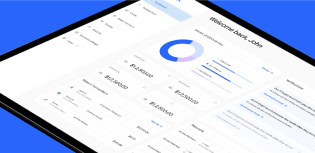3 ways AI & automation can streamline your back-office operations

Back-office operations aren’t the sexy part of any business. There’s always some other department in the spotlight first – mainly sales and services, since they are revenue-generating. They get all the flashy new tools that support growth.
However, if you’re not paying attention to the back office and trying to optimize processes, you’re missing out. According to the Aberdeen Group’s report, Essentials to Modernize Your Back Office, back-offices that modernize their operations through automation and RPA achieve the following:
- Almost 12x growth in yearly staff productivity
- Nearly 6x hike in service level agreements (SLA) compliance
- Close to 3x boost in annual customer satisfaction scores
But the most compelling result is an “average 15.3% year-over-year decrease in operational costs.” Just imagine what you could with an extra 15.3% of your budget each year.
The challenges of managing back-office operations
Back-office operations are complex beasts with many moving parts. In most cases, they don’t have the necessary systems and processes to connect back centrally.
Manual processes take loads of time and lead to errors. Consider for a moment an AP clerk manually processing invoices, legal staff reviewing customer contracts one-by-one or IT teams going through tickets that duplicate requests many times over. All of these processes are slow and highly error-prone.
Workloads skyrocket without additional headcount. Time-intensive processes require businesses to hire based on the volume of work. For example, an organization might need one AP clerk per 500 invoices processed per month. Or they need to add an accountant based on financial volumes because of lengthy reconciliation work. With the current accounting shortage, hiring is incredibly difficult.
Decision-making is impaired without real-time data. Manual processes only offer a historical view of data – i.e., invoices processed, contracts reviewed or tickets resolved. There’s no way to look at what’s happening in real-time and decide to shift budget or forecast into the future.
The benefits of automation & AI for modern back-office operations
Automation and AI can remove the manual burden on back-office teams and transfer the work to an intelligent process. Rather than having finance staff track down receipts, fill in GL codes and match receipts to transaction records, automation and AI can take over. Finance staff can create workflows and then let the system do the work, saving time and eliminating errors in the process.
By drastically reducing the time needed to complete back-office work, automation and AI enable scalable solutions that support growth. If the burden of work falls squarely on an automated process, there’s no need to hire additional headcount as the workload increases. The result is a leaner finance team that has the time and space to provide strategic guidance to the business.
And because automation and AI-enabled processes work instantaneously, back-office teams can get real-time visibility into operations for better oversight. Finance staff can see spending patterns as they happen, monitor budgets to prevent overspending and perform forecasting and financial modeling for projected business growth.
How AI & automation make back-office operations more efficient
Eliminating repetitive tasks
AI-powered tools can handle tasks like matching line items on receipts to transaction details on card statements. Automated processes can capture receipts in real-time in a variety of formats, including text, email or direct uploads. Finance staff can pre-program GL code-to-merchant matching so GL codes are automatically applied to purchases. As the system ingests data, it’s automatically synced to relevant platforms to ensure data consistency.
Increasing compliance
Finance teams can create a rigid framework for spending using automated processes. They can block card usage for employees who are out of compliance with expense policies. They can create customized spending rules that limit purchases based on merchant type, location or spend amount and can define who has approval authority and how many levels of approval are required. Each step is documented in the system, making regulatory adherence easier.
Improving financial reporting
Automated processes and AI-powered functions enable instantaneous data capture. Capturing data in real-time means that reporting can happen in real-time as well. Finance staff can auto-sync data between platforms every time there’s an update. This process gives them a full picture of real-time financial health, and they can shift directions in the moment. If spend is over budget on one project and under budget on another, they can adjust accordingly.
Get started with PEX: Streamline your back office
PEX’s expense management platform can help reduce complexity in your back-office operations. By leveraging automation and AI, PEX eliminates the manual burden that so many finance teams experience.
Using functions like real-time receipt capture, GL code auto-tagging, AI-enabled receipt matching and custom spend rules, PEX puts the work on the process – not the person.
Contact us for a demo to learn how you can use PEX to save time, increase compliance and create greater visibility for your organization.
Similar resources
Opinions, advice, services, or other information or content expressed or contributed here by customers, users, or others, are those of the respective author(s) or contributor(s) and do not necessarily state or reflect those of The Bancorp Bank, N.A. (“Bank”). Bank is not responsible for the accuracy of any content provided by author(s) or contributor(s).








